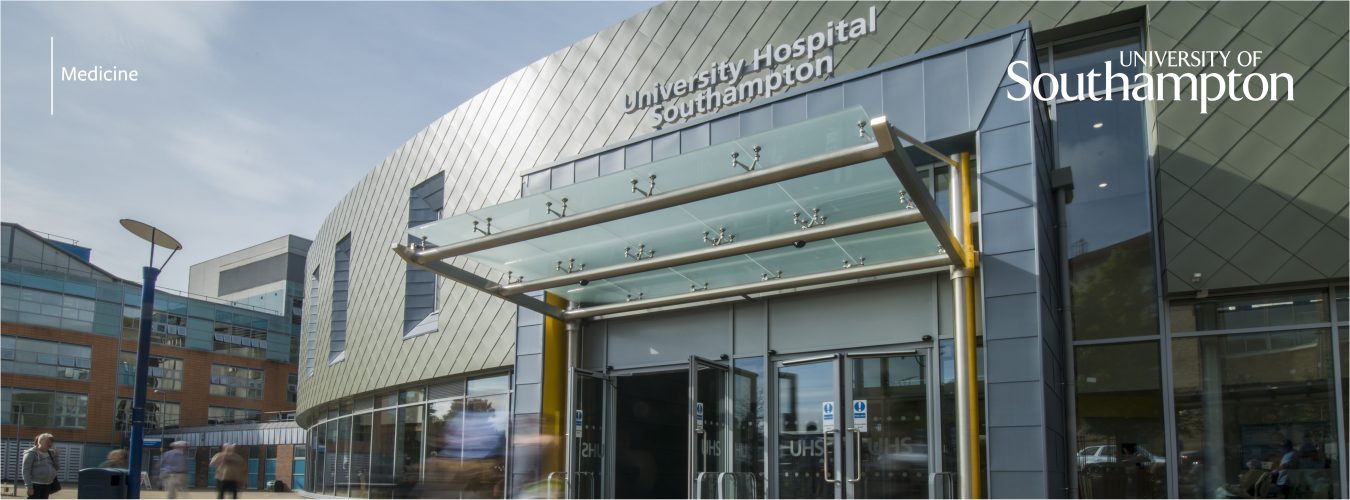‘Inspiring Stories’ with Anastasia Polydorou
Postgraduate student researcher
aep1g17@soton.ac.uk
This is part of the Engaged Medicine ‘Inspiring Stories’ blog series. The blogs explore the stories behind outreach and patient-public engagement activities of staff and students from the University of Southampton’s Faculty of Medicine.
What motivated you to get started with Public Engagement/Patient involvement and what do you do to engage?
I don’t think I can define a specific moment in time that marks my start of involvement with PE and outreach as I’ve been part of such activities from as early as my undergraduate studies. During my undergraduate degree at Cardiff university, I jumped at any opportunity to engage with young people and inspire them to find their interest and pursue this whatever it may be. I also worked as a demonstrator for Techniquest which is an amazing science centre at Cardiff Bay where schools and families can visit and learn more about many aspects of science. This was one of my earliest experiences which specifically involved my passion, which is science, with inspiring children and passing on some knowledge which they can build upon. During my MSc I carried out seeking public engagement opportunities and took part in events where schools either came to the university or we went to schools and spoke about the field of Tissue Engineering and the incredible work that is done in this field.
During my PhD especially, I actively sought public engagement opportunities as I felt that the fulfilment and interaction from engagement opportunities, helped to give my PhD perspective and inspire me to keep going. These events included University Open Days, The New Forest Show, Bake your PhD, Pint of Science, LifeLab and many more. Aside from the regular outreach and engagement events, I soon realised that another important element of engagement was not just engaging with the ‘outside’ world, but also with those around you across the University, as connecting with researchers and colleagues from other background contributes towards your understanding of the wider work of research which then also shapes what is being communicated to the outside world. This drove me to establish the Student and Postdoc Interactive Network which aimed to achieve this on a local level, within HDH and currently I am now working as an Engaged Medicine Coordinator Intern for Dr Lucy Green. This role has given me insight into just how diverse and incredible the research across the Faculty of Medicine is, and further highlights the benefit and need for internal engagement within the faculty as well as engagement with the external world.
Each of these opportunities are so important and leave me particularly filled with a sense of purpose and inspire me to keep going.
What reaction do you get during Public Engagement and Outreach events?
My favourite reaction is what I like to call ‘the light bulb moment’ with younger people, when explaining concepts, they once thought were intangible for them. These are particularly prominent at the meet the scientists sessions at LifeLab, where school children’s interaction with you is so different, the level of authority that teachers have over them doesn’t play a part so you can get to their level and they become braver with their thoughts and questions. And that’s when they shine. I love the moments where a quieter student will whisper a question or answer under their breath and I try and catch and amplify them to validate what they’re saying, and the best reactions are from these students who get surprised that what they just said was a great question or a great point and they start to realise that science really is just about asking these questions.
What’s the impact?
Impact is a hard one to touch on and I think it varies depending on what the outreach activity was and who it targeted. Impact radiates into so many elements and directions. The impact on society translates into trust in science and as we’ve experienced with the pandemic this then means compliance and safety for the community as a whole. Trust in the science and research also translates into funding and participation in trials so this then has a direct impact on the research we do. Impact on youngsters and school children however can reach far further than just inspiring knowledge or even shaping their behaviour as a result of learning something. The right interaction breaks down the stereotypical barriers between science and lower academic abilities. It allows them to realise that they are capable of understanding and contributing to a discussion surrounding science. And that has the power to charge the course of a student’s outlook on their education.
Why do you think Public Engagement and Outreach are important?
The best wat to visualise the importance is with a product/consumer analogy, where research is the product and the public are your consumers. You need to engage with the consumer to understand what the product needs to be and then once the product is developed or in the process of development, you need to update and inform the consumer of your progress and launch dates, in order to ensure continued support and interest as well as utilising and benefitting form your product. So for the benefit of both, this relationship is vital. And in the case of outreach with young people, you have the added benefit of encouraging their interest in future research which is crucial for the future of science.
Stay Connected! To find out more about the ‘Inspiring Stories’ series, Faculty of Medicine educational programmes and research, or to get involved use the links below or contact Dr Lucy Green.
University staff or students click here for the Engaged Medicine SharePoint


